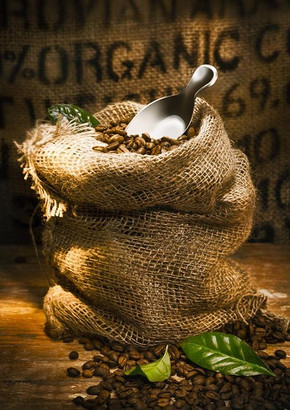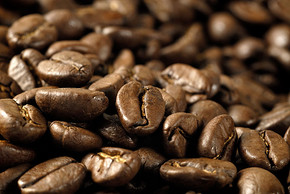Introduction to the Origin of Colombia Coffee beans in Colombia
Coffee may have been introduced by Jesuit monks in 1723, but opinions vary. Coffee gradually spread to various parts of the country to become a cash crop, but coffee production did not really begin to play an important role until the end of the 19th century. By 1912, coffee accounted for 50% of Colombia's total exports.
Colombia is well aware of the value of marketing and began to build a brand image very early. The creation of Colombian coffee spokesman Juan Valdez in 1958 was arguably their greatest success. Juan Valdez and his mule have become representatives of Colombian coffee, and their images can be seen everywhere on coffee packages and on different advertising campaigns, played by three different actors over the past few years. Juan Valdez has become an easy-to-identify brand (especially in the United States) and adds value to Colombian coffee. Colombian coffee has a unique position in the eyes of global consumers because of early marketing slogans such as "Alpine Coffee" and constantly promoted with "100% Colombian Coffee".
All these marketing programs are initiated and implemented by the Colombian Coffee producers Association (FNC). Founded in 1927, the association is quite unusual for the coffee industry. Although there are various organizations in many countries that specialize in export and promotion, there are few organizations of such a large and complex scale. FNC is a private non-profit organization that aims to protect the interests of coffee producers and is funded by special taxes on coffee export income. Because Colombia is one of the largest coffee producers in the world, FNC has huge funds and has become a huge bureaucracy. It may be inevitable to become bureaucratic, as FNC is now made up of 500000 coffee producer members.
Follow the caf é (Wechat official account vdailycom) and found that Beautiful Cafe opened a small shop of its own.
FNC not only ostensibly involves coffee marketing, production and financial operation, but also its tentacles go deeper into the community development level of the producing areas. FNC contributes a lot to social and physical construction, including suburban road buildings, schools and health centers. FNC has also invested in a number of industries other than coffee to assist regional development and improve the welfare of residents.
FNC and quality
In recent years, there have been some frictions between FNC and quality-oriented producers. Because FNC is in the interests of farmers, sometimes it may not be helpful to improve the quality of coffee. FNC has a research department called Cenicafe, which specializes in the cultivation of specific varieties, and many people believe that the promotion of Castillo varieties is aimed at improving yield rather than quality. However, both approaches have their own advantages and disadvantages, and as global climate change begins to have an impact on the stability of Colombia's coffee industry, it is also difficult to oppose a variety that ensures the livelihood of coffee farmers. in the end, some varieties with better flavor must be sacrificed as a price.

Production and marketing resume
To promote Colombian coffee, FNC coined the terms "Supremo" and "Excelso". It is worth noting that they are related to the size of coffee beans, but not to quality. Unfortunately, this classification also makes the production and marketing resume very blurred, because coffee beans using this classification may come from many different coffee plantations, which are mixed and mechanically screened and then graded according to size. Basically, this is average-grade coffee, and the name doesn't help buyers who want to buy high-quality coffee. The boutique coffee industry is committed to maintaining the existence of production and marketing experience. So if you want to buy amazing coffee, make sure the beans come from a specific area, not just the size of the beans.
Coffee taste
Colombian coffee has many different smells, some full-bodied with chocolate flavor, some Wan as sweet as sauce, with fruity aroma. There are great differences among different producing areas.
Producing area
Population: 47073000
2013 production (60 kg / bag): 10900000 bags
Colombia has well-defined producing areas that produce a wide variety of coffee. Whether you want round, full-bodied, vibrant, fruity (or somewhere in between) coffee, you should find it in Colombia. Each producing area is divided by geographical environment rather than administrative region. Therefore, it is quite common for coffee to be similar in each producing area. If you like coffee from one producing area, you may also like coffee from many other different regions.
Coffee trees in Colombia are harvested twice a year, divided into the main production season and the local secondary production season known as mitaca.
Important Notice :
前街咖啡 FrontStreet Coffee has moved to new addredd:
FrontStreet Coffee Address: 315,Donghua East Road,GuangZhou
Tel:020 38364473
- Prev

Ranking of Yunnan coffee brand sales which are the three famous coffee brands of Yunnan coffee beans
Following Cafe Review (official Wechat account vdailycom) found that Yunnan coffee is mostly planted in dry and hot river valleys around 1100 meters above sea level, so it has a moderate sour taste, rich and mellow flavor. As far as climatic conditions are concerned, the light time in southern Yunnan is long, which is beneficial to the growth of plants.
- Next

Differences, distinctions and awards of individual beans in Colombian coffee
Professional barista exchanges please pay attention to the coffee workshop (Wechat official account cafe_style) Colombian coffee individual beans differences, distinction and award-winning situation of Colombian coffee beans exported from Colombia, processors purchase from coffee farmers, after specific gravity inspection and manual methods to pick out defective beans, after layers of strict inspection before bagging, so the quality of Colombian coffee can be purchased.
Related
- Detailed explanation of Jadeite planting Land in Panamanian Jadeite Manor introduction to the grading system of Jadeite competitive bidding, Red bid, Green bid and Rose Summer
- Story of Coffee planting in Brenka region of Costa Rica Stonehenge Manor anaerobic heavy honey treatment of flavor mouth
- What's on the barrel of Blue Mountain Coffee beans?
- Can American coffee also pull flowers? How to use hot American style to pull out a good-looking pattern?
- Can you make a cold extract with coffee beans? What is the right proportion for cold-extracted coffee formula?
- Indonesian PWN Gold Mandrine Coffee Origin Features Flavor How to Chong? Mandolin coffee is American.
- A brief introduction to the flavor characteristics of Brazilian yellow bourbon coffee beans
- What is the effect of different water quality on the flavor of cold-extracted coffee? What kind of water is best for brewing coffee?
- Why do you think of Rose Summer whenever you mention Panamanian coffee?
- Introduction to the characteristics of authentic blue mountain coffee bean producing areas? What is the CIB Coffee Authority in Jamaica?

